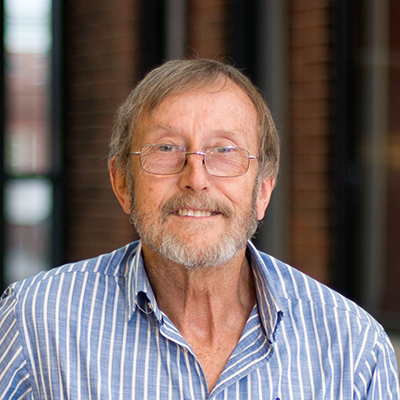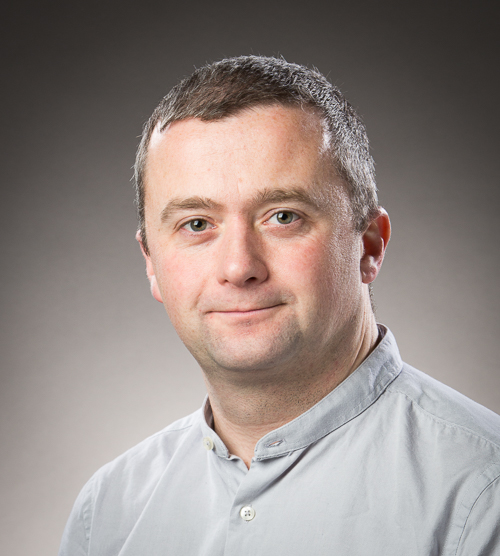
Ian Burgess gained his first degree at the University of Cambridge, and his doctorate at University College London in the Structural Stability Research Group led by Professor Henry Chilver. Other areas of research included buckling of petrochemical pipeline linings, directional instability of slender piles driven into soft soils and a two-year NRC fellowship at McMaster University in Canada working on the theory of flutter instability in aero-elastic systems.
In the mid-1980s he began a very fruitful and enduring collaboration with Roger Plank in developing numerical techniques for modelling of the behaviour of steel and composite elements in fire. A finite element approach developed progressively from 1990 as the emphasis gradually shifted from members in isolation towards the performance of whole steel and composite framed building structures and sub-frames. The current Vulcan software came from this basic research and development aided significantly by the full scale fire tests on the multi-storey building at Cardington were a vital ingredient in the development of the software, and in understanding the complex interactions which take place in fire. The most important current theme, after the tragic events of 11 September 2001, concerns the robustness of connections in fire and the avoidance of progressive collapse of buildings in fire. Two companion papers, published in the ASCE Journal of Structural Engineering, were awarded the Raymond C Reese Prize in 2005. Two other papers (1996 and 2010) were given Henry Adams Awards by the Institution of Structural Engineers.

Roger Plank was responsible for structural design at the Department of Civil and Structural Engineering of the University of Sheffield. During this time he established an internationally renowned structural fire engineering research group with Ian Burgess, carrying out pioneering work on modelling whole structure behaviour in fire, and playing a key role in the Cardington research programme.
In 1987 he transferred to the School of Architecture, playing a major role in the development of the highly acclaimed dual course in Structural Engineering and Architecture, and leading a number of funded projects developing new teaching material for design in steel, whilst maintaining an active role in the fire research group. He was promoted to Senior Lecturer in 1989 and appointed as British Steel Professor of Architecture/Structural Engineering in 1995, becoming Head of School in 2004.
Honours include the Institution of Structural Engineer’s Yorkshire Branch Prize (1981) and Henry Adams Award (1997 and 2010), the ASCE’s Raymond C Reese Research Award (2005), and the Institution of Fire Engineers’ Rasbash Medal (2010).
He served as Visiting Professor in New Zealand, Malaysia and Brazil, and chaired a number of committees for the UK steel construction sector, the European Convention on Constructional Steelwork, and contributed to a number of government research initiatives. In 2008 he was appointed as lead member of an expert panel advising the government on fire research.
He was chairman of the Steel in Fire Forum, a member of the Steel Advisory Group which provides direction for the EU’s Research Fund for Coal and Steel, and an evaluator for the European Research Council. He is an active member of the Institution of Structural Engineers, serving as President in 2011.

Mick Green‘s primary experience relates to design, approvals and the application of research combined with a creative approach to the fire engineering design of buildings. Over 40 years experience in design and construction and over 30 years contributing to the development of fire safety engineering. Introduced the first significant fire FEA into the UK/London market providing knowledge, training and background to support the design and approvals process on a major headquarters building.
Previously as a partner of Buro Happold consulting engineers, he founded the fire safety engineering group FEDRA. Selected fire safety engineering design projects include: – Millennium Dome and O2 redevelopment, Ascot Race Course, Grand Museum of Egypt, Al Faisaliah Tower inRiyadh, Arsenal Football Arena, British Museum, Wimbledon centre court.
Professional / academic contributions including authoring / chairing the production of books & guides across the fire engineering discipline include: –
- Chairman, industrial liaison, University of Sheffield
- Chairman of the Fire study group IStructE
- Ran MSC course at the University of Leeds on the fire appraisal of existing structures
- Contribution to the basic principals behind the development of the means of escape for BS9999, Fire Safety Design. Wrote BSI handbook to this standard.
- Ran course for Engineering and Architecture students at the University of Bath
- Ran course for Architecture students at Royal College of Art
- Other University collaborations include: – Greenwich, Southampton, Edinburgh, Tongji (Shanghai), Singapore, Sheffield, & Loughborough.
- Books & guides, include: – Appraisal of existing sports grounds guide IStructE, CIBSE guide E on fire safety – smoke control section, Introductory guide to fire safety engineering of structures – IStructE, Advanced guide for the fire safety engineering of structures IStructE.
- Development of risk based approach to improve fire fighter safety re building performance

Paul Shepherd‘s primary responsibility is for the quality of the software products and the user interface. He has more than two decades of experience of software development for high-end engineering applications and especially in the field of Structural Fire Engineering. After completing a degree in Mathematics at Cambridge and a PhD in Structural Fire Engineering at Sheffield he went on to join international engineering consultancy Buro Happold as an Analyst, Engineer and Software Developer. Developing their in-house non-linear analysis software for fabric structures and parametric modelling gave him the opportunity to work on some high-profile projects with some of the world’s leading architects. This experience of writing and using innovative software solutions to aid in the design of complex and challenging structures was invaluable when he later set up Buro Happold’s software development and analysis group later known as SMART.
Paul is now Professor of Computational Design at the University of Bath, where his research interests focus on how computers can be used more intelligently in the structural and environmental design of complex geometry buildings.

Zhaohui Huang graduated with a BEng in Forest Products Engineering from the Fujian Forestry College, China in 1982 and Lectured in Timber Structures before coming to the UK. He received his PhD from the University of Central Lancashire in 1995 on the thermal and fire performance of cementitious building components. He joined the Sheffield Structural Fire Research Group, led by Professors Burgess and Plank, in 1996 as Post-Doctoral Research Associate, where he made major contributions to the development of Vulcan. He developed the slab elements to a geometrically non-linear formulation, in order to allow investigation of the effects of compressive membrane action at low deflections and both tensile membrane action and catenary tension at high deflections. Two papers on this work were awarded the ASCE’s 2005 Raymond C. Reese Research Prize. The six full-scale Cardington fire tests were intensively modelled to validate the approach.
Since being appointed to a Lectureship in Sheffield in 2004 he has successfully supervised several PhD students whose work is focused on numerical modelling of concrete and composite buildings under fire conditions. He moved to Brunel University as a Reader in Civil Engineering in 2011. Since 1995, he has published more than 70 refereed papers including 36 journal papers in the field of numerical modelling of structures under fire conditions. Additional research interests include: explosion and earthquake; non-linear computational mechanics & macroscopic properties of materials for the design of new super insulation and fire protection materials.
His teaching interests include structural analysis and design; fire safety engineering, finite element analysis; computational mechanics; engineering and dynamic mechanics. Recently, he has developed a new MSc Structural Engineering course at Brunel University.
